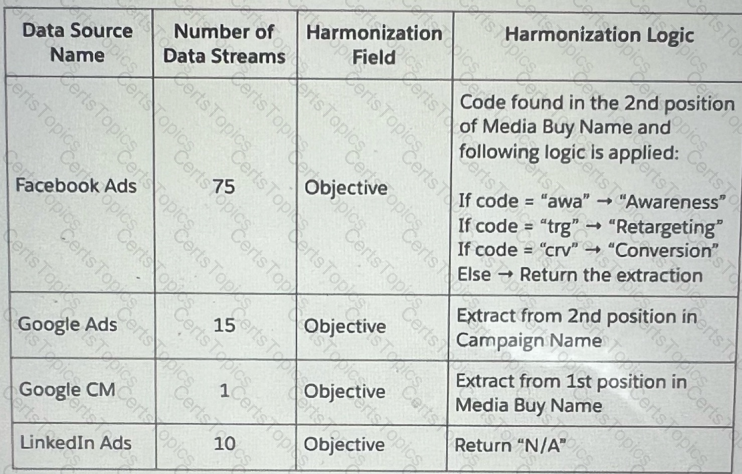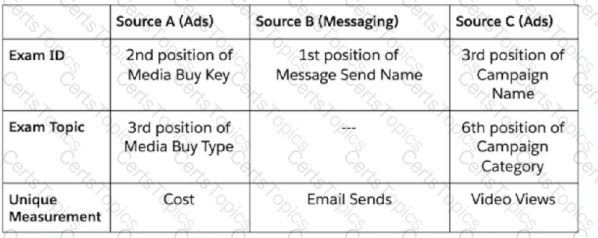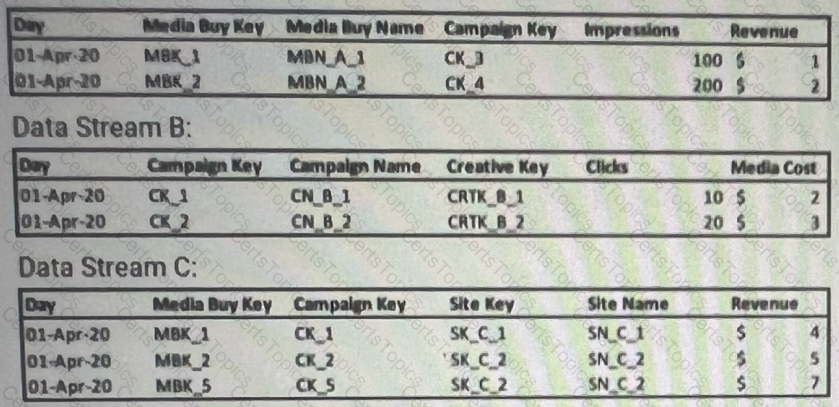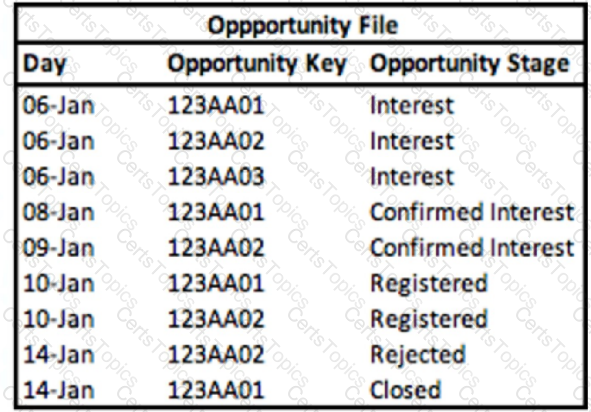A client wants to integrate their data within Marketing Cloud Intelligence to optimize their marketing Insights and cross-channel marketing activity analysis. Below are details regarding the different data sources and the number of data streams required for each source.

Which three advantages does a client gain from using Calculated Dimensions as the harmonization method for creating the Objective field?
Your client would like to create a new harmonization field - Exam Topic.
The below table represents the harmonization logic from each source.

As can be seen from the table, there are in fact two fields that hold a certain connection: Exam ID and Exam Topic. The connection indicates that
where an Exam ID is found - a single Exam Topic value is associated with it.
The client has a requirement to be able to view measurements from all data sources sliced by Exam Topic values, as seen in the following
example:

The client suggested to create, without any mapping manipulations, several patterns via the harmonization center that will generate two
Harmonized Dimensions:
Exam ID
Exam Topic
Given the above information, which statement is correct regarding the ability to implement this request with the above suggestion?
A client's data consists of three data streams as follows:
Data Stream A:

A technical architect is provided with the logic and Opportunity file shown below:
The opportunity status logic is as follows:
For the opportunity stages “Interest”, “Confirmed Interest” and “Registered”, the status should be “Open”.
For the opportunity stage “Closed”, the opportunity status should be closed Otherwise, return null for the opportunity status.

Given the above file and logic and assume that the file is mapped in the OPPORTUNITIES Data Stream type with the following mapping:
“Day” — “Created Date”
“Opportunity Key” + Opportunity Key
“Opportunity Stage” — Opportunity Stage
A pivot table was created to present the count of opportunities in each stage. The pivot table is filtered on Jan 11th. What is the number of ‘opportunities in the Confirmed Interest stage?